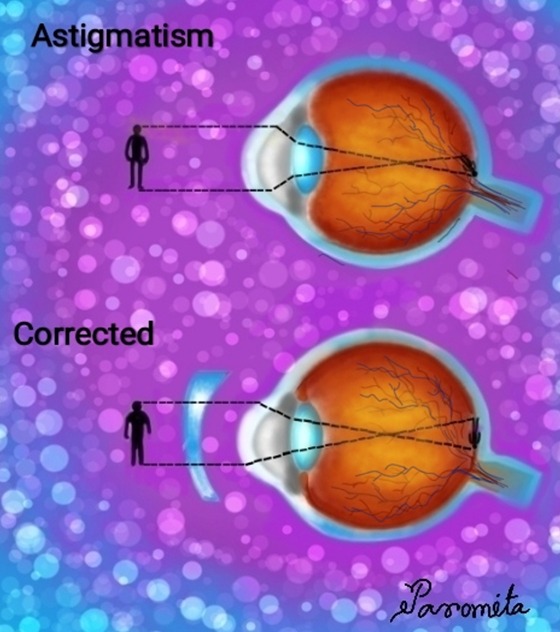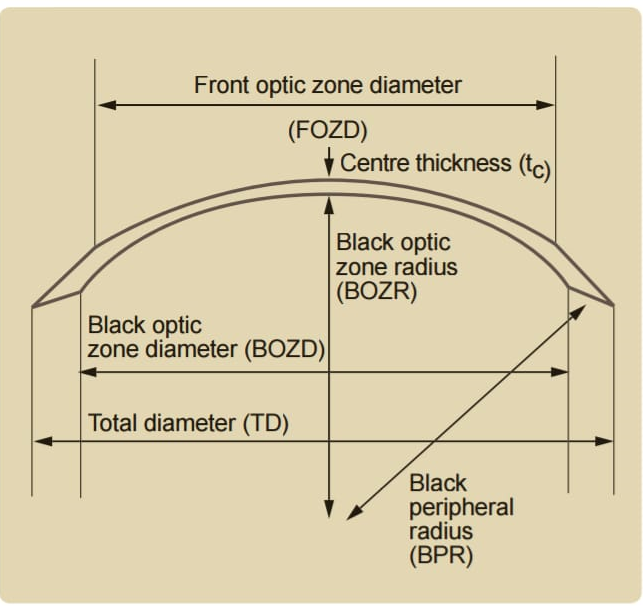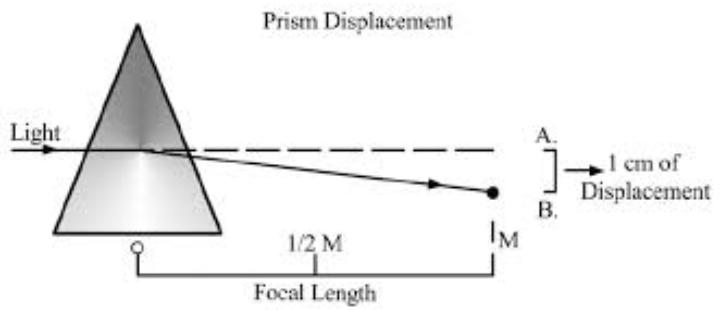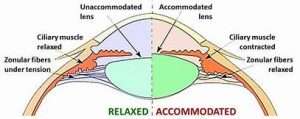Introduction: Astigmatism, as we know it, is ametropia created by meridional variation in refractive power of the eye. Curiously, it is one of the most difficult areas of refraction & what adds to the woes is the dilemma as to what prescription to be given in light of astigmatic error or mixed astigmatism. Most clinicians give less correction to begin with. Some do not give any correction in small astigmatic errors. While others falter in mixed astigmatism.
The goal of treating astigmatism is to improve vision clarity & eye comfort. Astigmatism corrected with eyeglasses, contact lenses & refractive surgery. Glasses are the simplest & safest, although contact lenses can provide a wider field of vision.
Treatment for regular & irregular astigmatism include prescription glasses or contact lenses. Laser-assisted surgery, such as LASIK, may also help.
Optical treatment
Glasses for Astigmatism It is a popular, simple choice with a wide range of options. They can usually correct mild & moderate regular astigmatism to 6/6 vision. The lenses are crafted to address the asymmetrical curvature of the eyes.
Contact lenses Like eyeglasses, contact lenses can correct most astigmatism. They are available in a variety of types and styles, including disposable soft; extended wear; rigid, gas permeable; and bifocal. Contact lenses are also used in a procedure called orthokeratology. In orthokeratology, you wear rigid contact lenses during the night while sleeping until the curvature of your eye evens out. Then you wear the lenses less frequently to maintain the new shape. If you discontinue this treatment, your eyes return to their former shape & refractive error.
Wearing contact lenses for extended periods of time increases the risk of infection in the eye.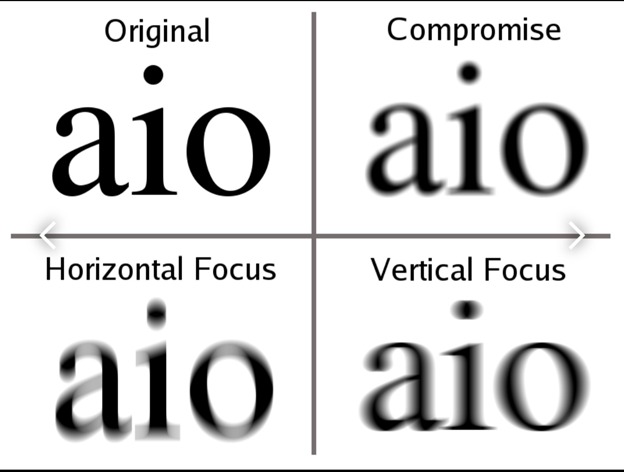
Guidelines for optical treatment of astigmatism
- Guidelines for small Astigmatism: Small astigmatism (0.5D or less) should be treated only if producing asthenopic symptoms or deterioration of vision. However, when low astigmatism is to be treated a meticulous refraction & utmost care is required in prescribing the cylindrical lenses.
- Guidelines for High Astigmatism: High astigmatism always needs to be treated. As a rule, every attempt should be made to correct the cylindrical error fully. However, an adult patient may not accept full correction when for the first time. Under such circumstances, The should be uncorrected until the patient is accustomed to the cylinder. Such patients should be checked at regular intervals & adjustment made till full correction is accepted.
- Guidelines for change in the axis of Astigmatic correctio: Especially in adults used to their old axis, should be done very cautiously. Such changes are often poorly tolerated. In such a situation, the patient may be asked to wear the prescription in a trial frame & walk around for a few minutes.
- Guidelines for New Astigmatic correction: Especially in adults should be preferably avoided, as it may produce intolerable distraction for the patient even if measurable visual acuity is improved. Under such circumstances, always advice the patients that there may be a period of adjustment for the new correction.
- Guidelines for Bi-oblique Astigmatism: Mixed astigmatism & high astigmatism are better treated by contact lenses than by spectacles.
Surgical Treatment
Some cornea-based surgeries that can treat astigmatism are:
1.Photorefractive keratomy (PRK): An eye surgeon removes the outer layer of cells on your cornea, and then reshapes the cornea with a laser. PRK might be an option for you if you have dry eyes or thin corneas.
2.Laser-assisted in-situ keratomileusis (LASIK): An eye surgeon reshapes your cornea through a thin flap they make on its surface. LASIK may be an option for you if your doctor says that your corneas are thick enough.
3.Small incision lenticule extraction (SMILE): The surgeon uses a laser to sculpt a disc-shaped piece of your cornea below the surface of your eye. Then they remove the disc through a small, laser-made incision in your cornea. SMILE may be an option for you if you have mild nearsightedness and astigmatism.
4.Astigmatism correction along with cataract surgery: This method is commonly used for elderly people with astigmatism who also have a cloudy area, or cataract, in the lens of their eye.
Another treatments are:
Benefits of Eye Exercises for Astigmatism:
It may sound unbelievable, but it’s true. Eye exercises are known to treat astigmatism. Just like the other muscles in our body, our eye muscles work on a simple logic; you need to use them or else you lose them.
- They help reduce the stress.
- They strengthen the eyes and relax the eye muscles.
- They improve vision over time or in as little as 1 to 4 weeks.
Below are 8 exercises you can do at home to treat astigmatism:
Exercise 1. Rectus muscle relaxation
Benefit:
This exercise relaxes the rectus muscles, which reduces the stress on the cornea and also strengthens the muscles around the eyes. It should be done 2 to 4 times a day.
The exercise should be done in the following steps:
1.Place your thumb over your nose at a 90-degree angle.
2.Move it clockwise to 12 o’clock position.
3.Keep it there for 2-3 seconds and then bring it back. Make sure your eyes follow your thumb.
4.Now move the thumb to 1 o’clock position, keep it there for 2-3 seconds and move it back to the original position (90-degree angle).
5.Repeat this for all clock positions.
Don’t forget to breathe properly during this exercise.
Exercise 2. Eye Massage
Benefits:
This exercise restores the shape of the cornea.
The exercise should be done in the following steps:
1.Close your eyes and then place two fingers on each of your eyelids.
2.By applying gentle pressure, slowly move your fingers in a circular motion from top to bottom and from right to left.
3.Move your fingers clockwise as well as anti-clockwise.
4.Repeat it for 10–15 times, 2 to 4 times a day.
Exercise 3. Reading
Benefit:
This exercise helps to release the strain and pressure caused by astigmatism, and must be done 2 to 4 times a day.
The exercise should be done in the following steps:
1.Pull out a book.
Place an object next to it. 2.After reading a paragraph from the book, focus on the object.
3.Continue doing this until your eyes start to feel tired.
Exercise 4: Vision Breaks
Benefit:
This exercise relieves eye pressure and strain.
The exercise should be done in the following steps:
1.Take a break from writing, reading, or staring at the computer.
2.Focus on other objects in the distance for at least 20 seconds
3.Repeat this exercise as many times as possible in a day.
Exercise 5. Head Tilting
Benefit:
This exercise helps the extraocular muscles to regulate the force they exert on the eyeball.
The exercise should be done in the following steps:
1.Look in the mirror to find out if you tilt your head to one side.
2.Spend time every day consciously trying to tilt your head in the opposite direction.
Exercise 6. Eye Yoga
Benefit:
This exercise strengthens eye muscles, sharpens focus and improves vision.
The exercise should be done in the following steps:
1.Keep your posture straight. Stand, sit in the chair or on the floor.
2.Close your eyes, breathe while concentrating on your eyes.
3.Slowly start moving your eyeballs from side to side.
4.Do this exercise several times a day.
Exercise 7. Blinking
Benefit:
Blinking keeps your eyes moist, hence, allowing you to focus better. It also decreases eye strain keeping them refreshed.
The exercise should be done in the following steps:
- Set a 2-minute timer.
- Blink every 3-4 seconds.
- Do this exercise at least 4 times a day.
Exercise 8. Figure 8
Benefit:
This exercise helps your eyes regain their strength and become more flexible.
The exercise should be done in the following steps:
- Look at a distance of 10 feet from your eyes.
- Imagine the number 8.
- Move your eyes along the figure for 2 minutes.
- Do the same in reverse for 2 minutes.
Each exercise mentioned above is meant to improve the strain and pressure exerted upon the eye muscles. Performing these exercises daily will reduce the symptoms and eventually treat astigmatism.
Here are some important eye vitamins that help to control astigmatism:
Vitamins Names
1.Vitamin A
2.Vitamin B &
3.Vitamin C

